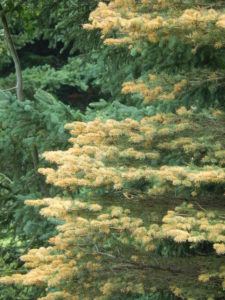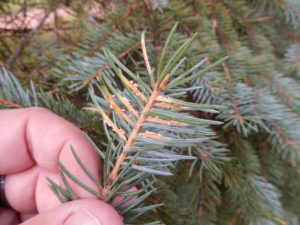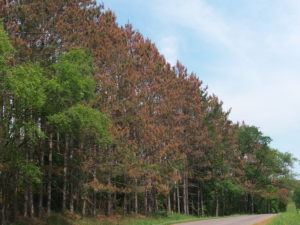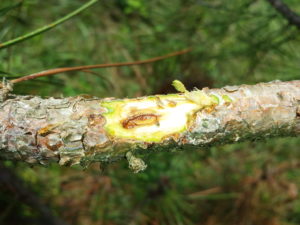Dutch elm disease seems to be quite prevalent around the state this year, including the northwoods. Symptoms, including whole tree yellowing and wilting have been occurring this summer, and will continue into this fall. Dutch elm disease is an exotic fungal disease that is spread by the elm bark beetle and can spread underground through root grafts as well. Since bark beetles are generally not attracted to smaller trees (sapling to small pole size) people often get their hopes up that their small elms have “escaped” and will survive and grow to maturity. Unfortunately, as soon as the trees are large enough for the bark beetles to be interested in them the trees may become infected with Dutch elm disease. The first symptom you will see is usually a single branch on which the leaves turn yellow and die. The rest of the tree will die shortly after that. Elm trees attempt to fight the fungus by walling off the portion of the tree where the fungus is located but this can lead the tree to self-induced water deprivation and death. More info on Dutch elm disease, including useful pictures, can be found in the U.S. Forest Service document How To Identify and Manage Dutch Elm Disease.

Dutch elm disease is spread by elm bark beetles, which create artistic galleries under the bark of the tree.
Chemical injections can protect single trees, and some communities in North America still have large stately elms due to this strategy. For new plantings, there are some disease resistant cultivars (those crossed with other elm species) and some disease “tolerant” cultivars of American elm which tolerate the disease without completely killing themselves.
Written by: Linda Williams, forest health specialist, Woodruff, (Linda.Williams@wisconsin.gov), 715-356-5211 x232.

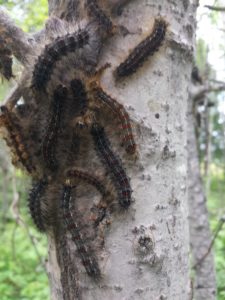
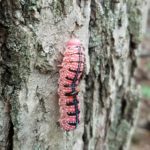
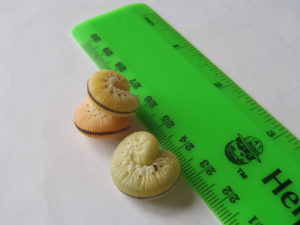 ere you can see how large elm sawfly larvae are, and there are some slight color differences in these. (Photo by Chris Plzak)
ere you can see how large elm sawfly larvae are, and there are some slight color differences in these. (Photo by Chris Plzak)